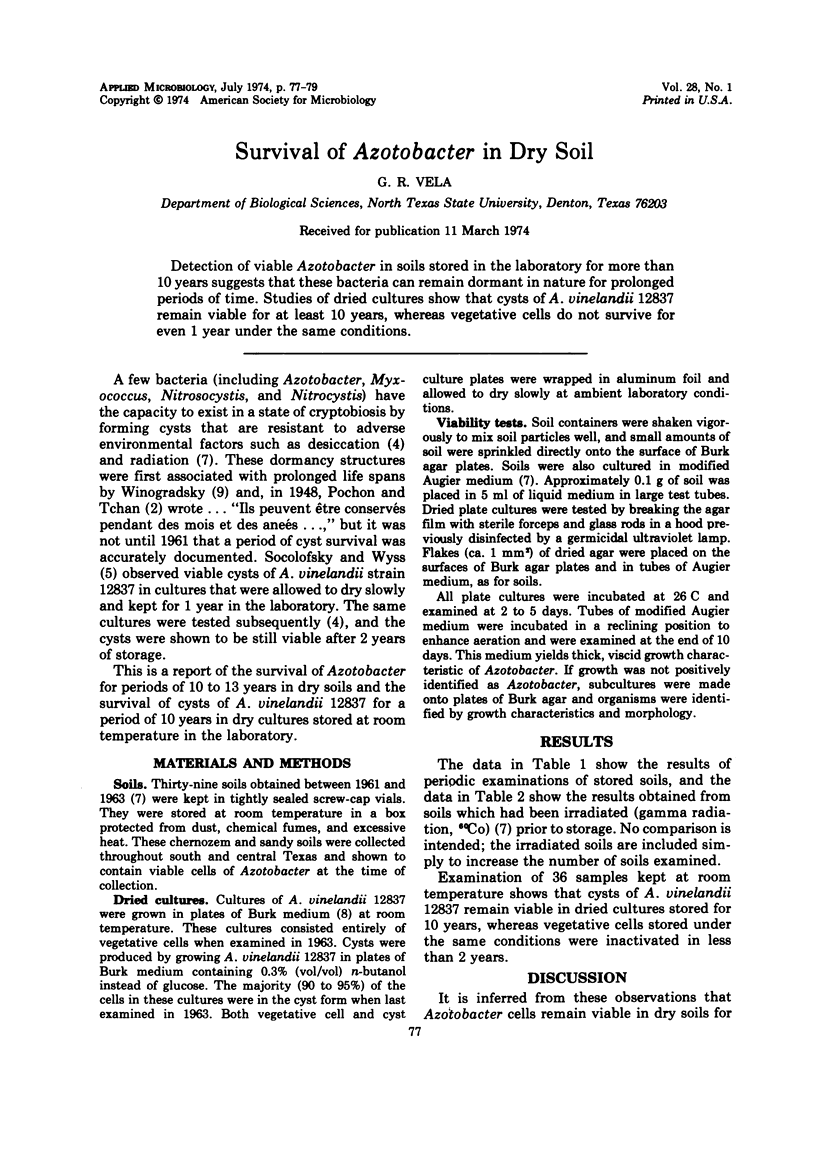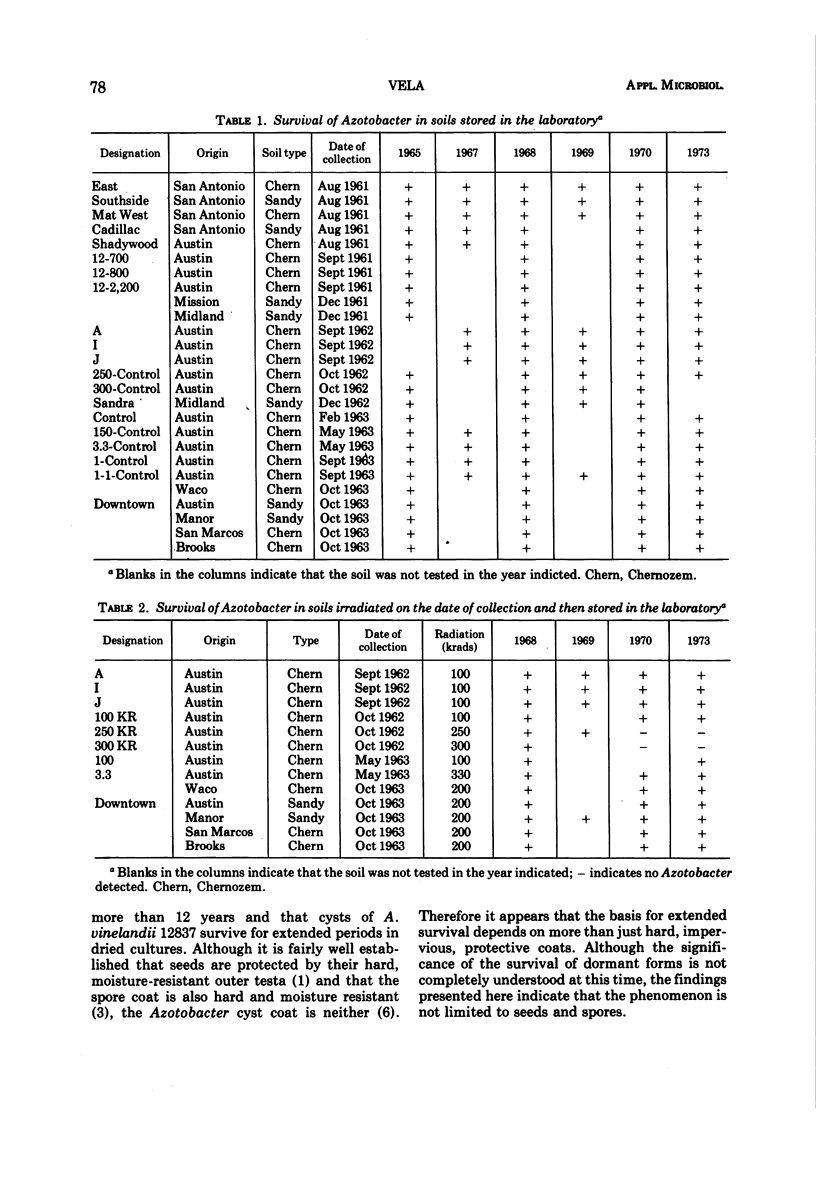Abstract
Detection of viable Azotobacter in soils stored in the laboratory for more than 10 years suggests that these bacteria can remain dormant in nature for prolonged periods of time. Studies of dried cultures show that cysts of A. vinelandii 12837 remain viable for at least 10 years, whereas vegetative cells do not survive for even 1 year under the same conditions.
Full text
PDF


Selected References
These references are in PubMed. This may not be the complete list of references from this article.
- SOCOLOFSKY M. D., WYSS O. Resistance of the Azotobacter cyst. J Bacteriol. 1962 Jul;84:119–124. doi: 10.1128/jb.84.1.119-124.1962. [DOI] [PMC free article] [PubMed] [Google Scholar]
- Socolofsky M. D., Wyss O. CYSTS OF AZOTOBACTER. J Bacteriol. 1961 Jun;81(6):946–954. doi: 10.1128/jb.81.6.946-954.1961. [DOI] [PMC free article] [PubMed] [Google Scholar]
- VELVA G. R., WYSS O. RADIATION RESISTANCE OF SOIL AZOTOBACTER. J Bacteriol. 1965 May;89:1280–1285. doi: 10.1128/jb.89.5.1280-1285.1965. [DOI] [PMC free article] [PubMed] [Google Scholar]
- Vela G. R., Cagle G. Formation of fragile cysts by a strain of Azotobacter chroococcum. J Gen Microbiol. 1969 Aug;57(3):365–368. doi: 10.1099/00221287-57-3-365. [DOI] [PubMed] [Google Scholar]


